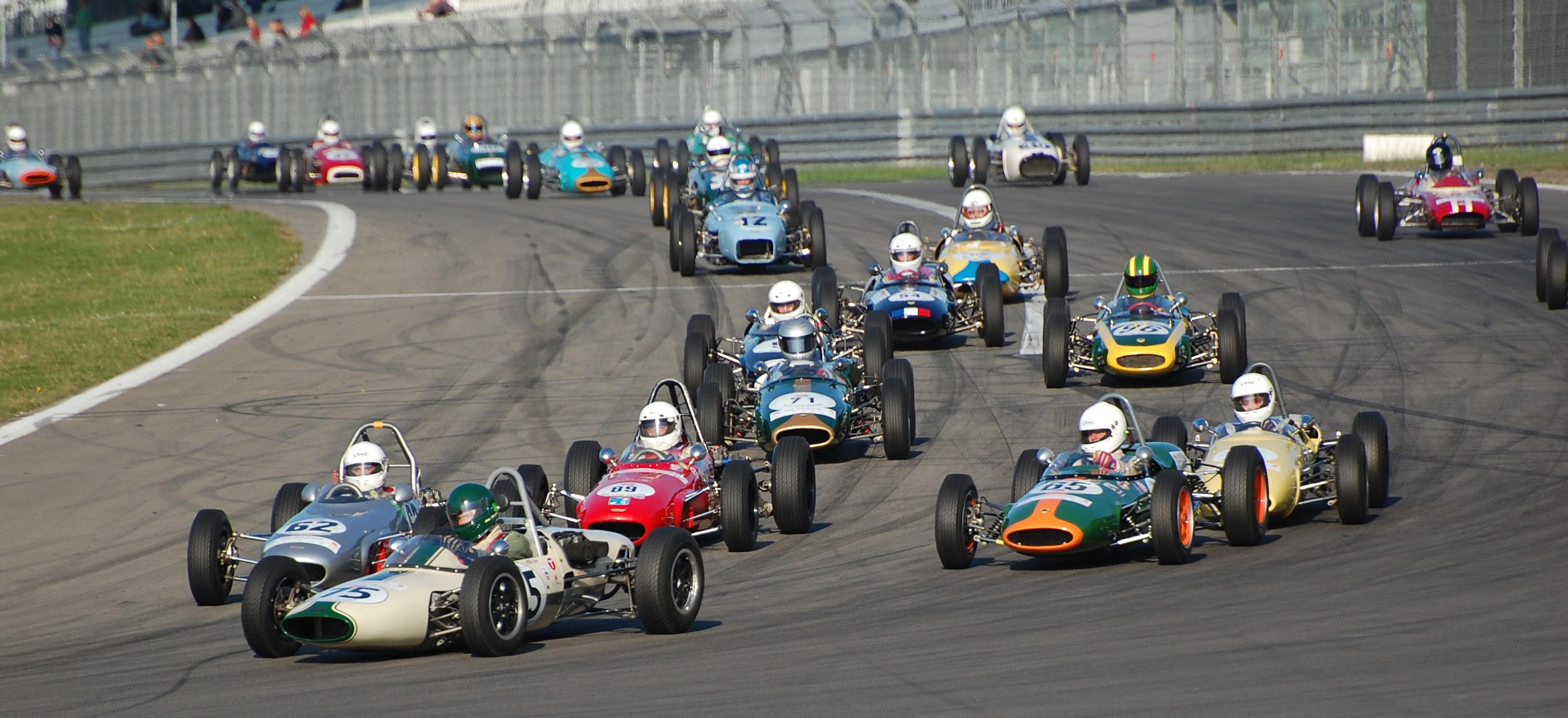Introduction
HISTORIC FORMULA JUNIOR
No International Formula has been more truly worldwide than Formula Junior, which celebrated its Golden Jubilee in 2008/2009.
2016 marks the start of a 3-year Formula Junior World Tour, to celebrate the Diamond Jubilee of Formula Junior.
The tour began in South Africa in January this year, and will also include sectors in Europe, Australia, New Zealand and North America, even including forays to Scandinavia and the Baltic States, before a grand celebration of 2 grids at the 2018 Silverstone Classic.
In Europe, FJHRA has passed its 21st anniversary, in Australia, AFJA has a 10 year pedigree, which was under the vibrant helm of President, Roger Ealand, until cancer cruely took him from us, and Kim Shearn is now ably acting in that role. Both the NZ Formula Junior Register, looked after by Nigel Russell, and FJHNA powered by Nick Grewal, covering the whole of North America from Canada to Mexico, are in their fourth season, and growing.
From 1958 to 1963 Formula Junior replaced the motorcycle engined 500 cc F3 cars as the stepping-stone to Formula 1. It was the brainchild of Italian Count ‘Johnny’ Lurani and provided for 1.0 or 1.1 litre production engines, and gearboxes in mini Grand Prix chassis. In its short 6 years, the design span covered the major progression of racing car evolution from ladder frame front-engined cars, through space frame cars with proprietary suspension like the Alexis HF1 [still raced today by FJHRA Co-ordinator Duncan Rabagliati], rear engined spaceframe’s such as the Coopers, to the full monocoque of the Lotus 27. Jim Clark, John Surtees, Jochen Rindt, Mike Spence, Mike Hailwood, Graf Wolfgang Von Trips, Gerhard Mitter, Lorenzo Bandini, Peter Revson, Giancarlo Baghetti and Howden Ganley, were amongst the G.P. Stars who formulated their careers in FJ. Races were run from Estonia to Australia, Macao to Cuba, with hundreds of cars competing regularly across the USA and East and Western Europe.
In 1975, Formula Junior was the first past formula to be revived as an historic series. The Formula Junior Historic Racing Association (“FJHRA”) was established in 1993. In 1995, the FIA Lurani Trophy for FJ cars became the first FIA Championship to be run by its own organisation. In 1997 the Formula Juniors first raced at Monaco and it was one of the closest races of the day and FJ have been competitors there since that time with a fantastic array of beautiful cars, recreating the era of the 1959-1963 era of Grand Prix Monaco Junior, and were again featured with the front engined Juniors in 2016.
Since 1998, Formula Juniors have raced annually at the Goodwood Circuit Revival Meeting and from 2014 also on rotation with F3 1000, at the revived Goodwood Members Meeting.

In all Championship races there are 9 FJ categories, which score points equally:
Class A; FJ/1-F – pre 1961 front engined with FIAT and Lancia engines
Class B1; FJ/1-F – pre 1961 front engined with Ford , BMC and other engines [1000cc]
Class B2; FJ/1-F – pre 1961 front engined with Ford , BMC and other engines [1100cc]
Class C1; FJ/1-R – pre 1961 rear engined [1000cc]
Class C2; FJ/1-R – pre 1961 rear engined [1100cc]
Class D1; FJ/2 – post 1960 front and rear engined-drum brakes [1000cc]
Class D2; FJ/2 – post 1960 front and rear engined-drum brakes [1100cc]
Class E1; FJ/2 – post 1960 front and rear engined-disc brakes, with Ford engines [1100cc]
Class E2; FJ/2 – post 1960 front and rear engined-disc brakes, with engines other than Ford (e.g BMC, DKW, FIAT) or fitted with Ford engines and a 4-speed gearbox of the original make and type as in period [1100cc].